
It is necessary to speak of HOPE.
For I am aware how much this website focuses on the crisis of modernity – the crisis of a world ‘drowned in utilitarianism, materialism, industrialism, technologism, biologism and psychologism’ as Valentin Tomberg once put it.
Valentin Tomberg, as it happens, is the main source for our post today. For although Tomberg was gravely concerned with the materialistic inundation of the world, he also extended hope in a very profound way.
Tomberg’s hope, like my own hope, was the hope of the Church.
Perhaps it is good, at least for newer readers of this site, to clarify that Tomberg’s perspective is as unusual as it is profound.
There is much regarding this, under the label Valentin Tomberg at this website. For now, let us simply say that the Russian Tomberg came from a background of hermetic Christianity and had been highly critical of the Church in his youth.
Later on, he converted to Catholicism and urged Hermeticists to the Church. Indeed, he wrote that Christian Hermeticists had a duty to serve the Church – to see that the Church’s flame is never extinguished, so that it always bears witness to God by the very fact of its existence, and so that it continues to burn from century to century. And he continued:
Has not the time finally arrived when we Hermeticists shall take account of the incontestable fact that it is thanks to the Church that we have air to breathe and that we have a place of shelter and refuge in this world of materialism, imperialism, nationalism, technologism, biologism and psychologism? It is in so far that the Church lives that we live.
The church bells once reduced to silence, all human voices desiring to serve the glory of God will also be reduced to silence.
We live and we die with the Church.
Because in order to live, we need air to breathe; we need the atmosphere of piety, sacrifice, and appreciation of the invisible as a higher reality. This air, this atmosphere in the world, exists in the world only by grace of the Church. Without it Hermeticism —indeed, every idealistic philosophy and all metaphysical idealism —would be drowned in utilitarianism, materialism, industrialism, technologism, biologism and psychologism.
Dear Unknown Friend, imagine to yourself a world without the Church. Imagine a world of factories, clubs, sports, political meetings, utilitarian universities, utilitarian arts or recreations—in which you would hear not a single word of praise for the Holy Trinity or of benediction in its name.
Imagine to yourself a world in which you would never hear a human voice say: “Gloria Patri, et Filio, et Spirttui Sancto, sicut erat in prtncipio, et nunc, et semper, et in saecula saeculorum“, or “Benedicat vos omnipotent Deus, Pater, Filius et Spiritus Sanctus“.
A world without worship and without benediction . . . how deprived of ozone the psychic and spiritual atmosphere would then be, and how empty and cold it would be!

Yes, Tomberg’s hope for the world was with the traditional Catholic (and Eastern Orthodox) Church. And although Tomberg’s hermetic perspective is unusual – he has done more to render hope to my soul than any modern author I have found.
For Tomberg not only placed his hope for the world in the Catholic Church – he also predicted the Church would overcome the grievous worldliness, which he saw so pronouncedly working through Vatican II.
Indeed, his last book Lazarus Come Forth offers one very dense, very rich passage on the regeneration of the Church that has provided real light to my soul for many years.
If you suffer pain, then, dear Reader, as you look out on a world inundated in materialism, if you grieve as you see the Church afflicted by the same, I would extend this very profound passage to you (with some further more humble comments from myself). I am grateful for permission to quote it and am breaking it down, with added white space, to make for easier reading from a computer screen.
I hope, if you suffer like myself, that you may find herein a wonderful tonic to sustain you. I certainly have. The more I have read and re-read it, the more I have been helped thereby. I commend it you, then, not just for reading but careful study …
The natural operation of the degeneration process is from time to time interpenetrated by supernatural impulses of regeneration. The operation of degeneration … can be made clear with the help of the following example from physics:
Imagine an impulse of energy which causes a kind of swinging motion. This movement will sooner or later deplete itself, that is, it will of necessity gradually lose pace and come to rest, unless brought into movement again by a second impulse of energy. The system of repeaters operating in long distance telephone connexions serves precisely the task of bringing the decreasing strength of the vibrations up to its original level. In this manner, the audibility of the human voice is carried on over thousands of miles.
Analogous to this is the law which governs every movement set going by an impulse – every movement which we call “fashion”, every movement in politics or in the sphere of world-conceptions.
All movements of a social, political, artistic, intellectual, and religious kind may indeed have different speeds of devolution, but one thing they have in common: if no reinforcing impulse is given after a certain time, they will inevitably exhaust themselves. A thing of motion or of life becomes a corpse unless ‘reawakening impulses” intervene. Impulses of regeneration, however, do actually intervene …
Thus, it was the spoken word of Jesus Christ heard by his disciples, it was his miracles which they witnessed, it was his Passion and Resurrection at which they were present, which made them into his disciples.
However, it needed the event of Whitsun (the pouring out of the Holy Spirit) to make them into apostles.
The event of Whitsun was the first reinforcing impulse, or we should rather say ‘reawakening impulse”, which turned Christianity from a local happening in Palestine into a worldwide human concern of the first order.
What economic, political, social, national, or psychological causes … could cause and ‘explain” the Whitsun event?
From which source in the visible world did the power stream which transformed a handful of men belonging to a Jewish sect into a spiritual world-conquering movement?
Whence their sureness, their energy, their success? The event of Whitsun was the intervention of an impulse which brought Christianity onto the level of the original impulse of the Son of God becoming man. It was the first renewal impulse or ‘reawakening’ … of Christianity …
The event of Whitsun was the first of a sequence of reawakening impulses which has kept Christianity alive through nineteen centuries.
For example, let us consider what happened in the Fourth Century at the time when the Church entered into an alliance with the Roman Empire and the influence of the latter became paramount. It was as if a dark cloud covered the sky.
It even came to a point when the center of Christianity itself – Christ himself as the Son of God made flesh – was to a large extent veiled, and Arianism for a time achieved almost complete dominance.
Then a strong fresh wind scattered the clouds and the sun of Christ as the Son of God shone forth again in the heavens as faith.
Not only a Pleiad of great believers (with St. Athanasius at their head), and holy hermits such as St. Anthony of Thebes (the friend of St. Athanasius), and great Priests such as St. Ambrosius and St. Augustine, were the fruit of this spiritual wind, but also – and especially – the Council of Nicaea with its wonderful creation of the Nicaean Creed …
Further interventions of reawakening impulses out of the [supernatural] sphere … were brought by spiritual movements which culminated in widespread religious orders, or in their renewal.
The impetus which underlay the great millennial-old mission of the Benedictine Order was the third intervention of reawakening after the Whitsun event.
It was the Benedictine Order which fashioned the bridge from the Christian culture of antiquity across the barbaric floods of the folk migrations to the epoch of the great cathedrals and the great thought-constructions of Scholasticism.
The Benedictine Order was the “Noah’s Ark” which rescued Christian culture together with the culture of antiquity, insofar as the latter had become taken up by Christianity – from the “flood’ of the great folk migrations.
A further impulse of reawakening took place in the thirteenth century. There arose two great Orders – the Dominicans and the Franciscans – which brought with them a mighty impetus for fostering Christian thinking and the Christian feeling-life.
A new springtime blossomed forth for Christianity. A renewed enthusiasm for a radical living of Christianity, inspired by St. Francis, and for a philosophically founded Christianity enlightened by thinking thought through to the last detail, inspired by St. Dominic, suddenly became active and took hold of the noblest hearts and minds of the time.
And yet the merciless, crippling influence of … degeneration asserted itself, and during the course of the following centuries this enthusiasm gradually dried up.
Then again there took place a streaming in of reawakening impulses in the sixteenth century. This expressed itself in a great movement of interiorisation connected with the bringing into existence of the Jesuit Order through St. Ignatius of Loyola and his comrades, and also in the reformation of the Carmelite Order through St. Teresa of Avila and St. John of the Cross.
There arose at that time a deep yearning for inwardness – for experience and understanding of Christianity at first hand. This yearning underlay a widespread meditation movement which then arose.
Already during the lifetime of St. Ignatius hundreds of thousands of people practised his spiritual exercises (exercitia spiritualia). It was a matter in this spiritual training of awakening the whole human being to the reality of Christianity through inner experience.
Through the meditative training people became more than pious; they became witnesses to the truth of Christianity, just as Paul, for instance, through his experience on the way to Damascus, became a witness to the Resurrected One.
The constructive effect of pious devotion was not supplanted – rather, it became supplemented by an inner dramatic transmutation, or even complete transposition, of thinking, feeling, and the will through the practice of the spiritual exercises.
Human beings emerged from the meditation training of the spiritual exercises to wholly devote themselves, out of their own deepest knowledge and conscience, to the redemptive truths of Christianity …
The epoch of operation of the fourth reawakening impulse after the event of Whitsun is ordinarily designated as that of the Counter Reformation. Actually, this should not be understood as anti-reformatory, but as a true reformation.
For the movement toward interiorisation and spiritualisation which arose then in the Church was indeed in a real sense reformation, and in no sense a process of outer revolt – destroying images and annihilating Church hierarchy, and doing away with spiritual orders and the three vows.
A monastery, for instance, is not reformed by chasing out the monks, but by bringing in a more interiorised spiritual life – as was the case, for example, in the reformation of monastic life in the Carmelite Order proceeding from St. Teresa of Avila.
The so-called Counter-Reformation and the so-called Reformation stand in the same relationship to one another as the spiritualisation of monasteries stands in relation to their dissolution.
The first was an impulse toward inner transformation; the second signified rebellion and “purge’. The one meant “evolution’, the other signified ‘revolution’.
It was the impulse toward inwardness of a Christianity reawakened through meditation which rescued the Church from the storms of the so-called ‘Reformation’, just as it was rescued by the Benedictine impulse from the storms of barbarism of the folk migrations, and just as the Nicean reawakening impulse saved it from the earlier storms of the Arian ‘reformation’.

Now, before continuing with this passage from Tomberg, I want to insert something that is germane to the Jesuitism Tomberg praises here. It is likewise germane to the very core of this website.
For there was another key factor in the Jesuit regeneration of the Church, beyond the spiritual exercises. Because, after the passing of St. Ignatius of Loyola, the Jesuits became enflamed with passion for the Sacred Heart of Jesus!
For in Paray-le-Monial in France in the late Seventeenth century, St. Margaret Mary Alacoque beheld the Sacred Heart of Jesus. And her confessor was the Jesuit St. Claude La Colombiere.
Now, St. Claude La Colombiere provided the bridge by which her vision of the Sacred Heart of Jesus became central to Jesuitism … (The interested reader may find much more by following the links I have given as well as our Sacred Heart archive of posts. But I will add that it was in Paray-le-Monial that this website was born as my soul was gradually transformed in ongoing prayer by the relics of St. Claude and St. Margaret Mary …)
Our main point here is that the Reformation attack on Christian tradition was not only combatted via the Jesuit exercitia spiritualia, but also with a fiery new impulse to attach human hearts to the Heart of Jesus.

Now, Tomberg does not mention this intensive connection between Jesuitism and the Sacred Heart in the passage above.
However, elsewhere in Lazarus Come Forth, he elaborates on the Sacred Heart devotion that the Jesuits turned to after St. Ignatius died.
For while he mentions neither St. Margaret Mary, nor St. Claude, it is clear from the context, as well as the time given (‘the second half of the Seventeenth Century’) that he means nothing other than the great revelation of Paray-le-Monial.
And, as so often, Tomberg writes of hope, hope amidst the very serious danger of being drowned in materialism …
There have been (and still are) times in Europe and elsewhere during which for whole nations the life of the soul as such has been (and still is) in grave danger, having been smothered and reduced to a minimum.
This holds not only with respect to the tidal wave of materialism that has flooded across the world in this century, but also for the outpouring of “intellectual enlightenment” during the age of rationalism in the Eighteenth Century, which paved the way for materialism.
At that time, the danger facing the human soul was so great that, in order to avert it, a special intervention from heaven proved necessary as a preventive measure.
This took place during the second half of the Seventeenth Century. It was then that the revelation of the most sacred heart of Jesus occurred.
This led to the cult of devotion to the most sacred heart of Jesus, which spread rapidly in Catholic countries and took root there. Devotion to the sacred heart of Jesus was to save the soul of humanity .
For, with the intellectual enlightenment, the danger threatening to break in upon human beings was that of the centaur. Human beings would have been turned into a kind of centaur — a being consisting of head and limbs (intellect and will), but without heart — that is, a “clever beast’.
Devotion to the sacred heart of Jesus had the task of rekindling the heart. Thereby the light, warmth, and life, streaming from the heart of Jesus, was to counteract the will-to-power and the intellect serving this will.
Be that as it may, the soul — understood as the most refined and deepest life of the heart — is by no means certain of survival, not even within Christian, civilised mankind. All kinds of dangers threaten, and destruction is an ever-present danger.
The life of the soul has to be cultivated and stimulated, as took place (and is still taking place) with the help of devotion to the Sacred Heart of Jesus.
What deeply moving moral deepness and beauty can be seen and experienced through devotion to the Sacred Heart of Jesus!
Yes, there is grave cause for concern regarding the ‘tidal wave of materialism’ – a tidal wave which threatens to render humanity stripped of heart and feeling, reduced to a highly rational, yet animalistic state.
When one considers our modern-day hedonism, coupled with modern technological prowess and arid intellectual formation, one can understand his image of the centaur as a symbol of danger to humanity.
But Tomberg also points out his conviction that Heaven is not silent in these regards …
In the first long passage we have quoted, the Church, he says, is regularly regenerated by the Holy Spirit. This has happened most recently in the true Reformation of the Sixteenth Century, spearheaded by the Jesuits.
And in the Seventeenth Century, he writes, the Sacred Heart of the world intervened – leading to Catholic devotion to the Sacred Heart. And this devotion was likewise spearheaded by the Jesuits.
And where are we today? It would seem that passion for the Heart of Jesus has decayed in the course of recent generations and that the process of worldly degeneration would again seem all-too-obvious.
It is also evident that Tomberg clearly regarded Vatican II (see here) as an example of degeneration into worldliness …
As Tomberg writes – continuing from the original long passage with which we started:
The intensity of meditative Christianity gradually lessened and what originally meant a dramatic transformation of the whole human being – of his thinking, feeling, and striving – ultimately developed into weekend retreats for the youth, for nurses, teachers, parents, and doctors … where lectures were held on moral and theological themes.
Although in itself a good thing, this has little in common with the meditative training of an Ignatius of Loyola or a Teresa of Avila.
The ebb, however, goes before the flow. It would be highly tempting to characterise the preliminary signs and particular characteristics of a new impulse of reawakening in our time, but we must hold back in this respect.
For, far too many people have definite views about it, and it is only right to leave them time, until actual events will themselves speak the last word on the subject, so that the various opinions will prove themselves to be either correct or false …
What am I to say, dear Reader?
Right now, I find I can only speak very personally. My years of pondering the situation of the Church today, the history of the Church and yes, the profound thought of Valentin Tomberg, leave me convinced of what he writes here: ‘The ebb, however, goes before the flow.’
I do believe that the threat of the centaur is very real – that our present society not only stimulates our basest, most animalistic instincts, but also a machine-like rationalism that cripple the human soul.
These concerns give rise to my apparently dark entries about the fate of Christianity. And yet this website is not about despair.
It is about the only hope I see.
That hope, as I said, in my last apparently dark post about the fate of Christianity, lies in the Seven Sacraments of the Sacred Heart of Jesus.
For Tomberg predicts a regeneration of Christianity. That regeneration, however, is faithful to what has been given before.
For the Jesuitism that Tomberg praises was intensely faithful to the tradition and to the Holy Father. Its fidelity to tradition countered the Protestant destruction of tradition that Tomberg found so baleful.
At the same time, new things appear in the life of the Church – new things that are legitimate and not simply the worldly innovations Tomberg saw in Vatican II.
We have seen how Tomberg writes of the newness and the freshness brought about by the spiritual exercises and devotion to His Sacred Heart.
We may trust: Heaven will not ignore the Church.
The Church will be refreshed and revitalised by the breath of heaven.
One might even predict that there will be a new passionate form of Jesuitism, one which remains intensely faithful to the past, whilst also fresh and enlivened by the new outpouring that is coming …
Foreword for Monarchy by Roger Buck
Buying Books at Amazon Through These Links Gives Us a Commission. This Supports Our Apostolate. Thank You if You Can Help Us Like This!

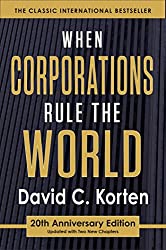

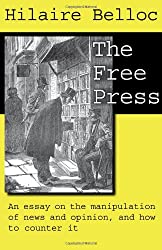
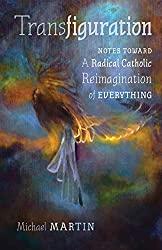




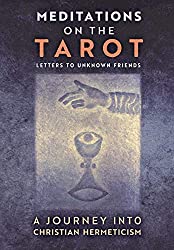
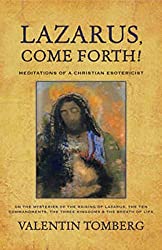

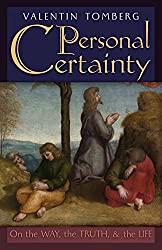
Comments
comments are currently closed
4 responses to “Tomberg on the Sacred Heart, Jesuitism and the Hope of Catholicism”
Indeed Roger, and with a Jesuit Pope shaking us out of our torpor, and bringing us to Christ, let us hope many will be inspired and revitalised . I love how Benedict and Francis are so important in Tomberg’s passage as carriers of the faith, regenerated by the Spirit, in their respective times, and how this echoes what the Popes with these names have done for my faith personally and that of many others in the present time.
In fact, although Tomberg’s writing brought me back to my own faith with fresh eyes, it is only since Benedict was made Pope, and I read his writings that I made the real step of becoming a practising catholic again. How profound his writing is! And now Pope Francis takes us out into the world, to the ‘peripheries’ as he calls them, to bring the revitalising message. Bless you for this post, I really enjoyed it.
Matt:
It’s good to have people like you coming back to the Church, people who grew up on the Faith, went outside looking for something else and that something else led them back to the Church. The esoteric aspects of Catholicism have been terribly neglected during the last century or so. Hopefully there is always people like Tomberg or Guénon or Hani that canhelp us find that transcendental dimension that sometimes is lacking.
Roger:
Wonderful post. Cyclology or the science of cosmic cycles is almost nowhere to be found in Catholic texts (in fact, the only other I’ve found in a text by Abbot Trithemius, mind you) but this fragment by VT and your comments are simply wonderful. The same can be said on a microcosmic level, when man can instead of devolving into man-the-animal can, through the Seven Sacraments become man-the-image-of-Christ.
Nice post!
Blessings!
Matt, Juan, thank you for your kind comments here.
Among other things, I am grateful for the testimony you both have made here – at different times – of coming back to the Holy Church.
I post these things about Catholic Christian Hermeticists, knowing they may confuse certain traditional readers – asking what is it doing in a website like this. (Perhaps more so in the English-speaking world than in La Hispanidad, Juan.) So I am thankful that people like yourselves can witness to the Church.
It might be added that Tomberg is certainly rescuing Anglophones from the largely Anglophone New Age. In La Hispanidad, the situation does not appear nearly so grave to me. (But all I know first hand is Spain.)
It is good also to hear of you reading the ‘profound’ Benedict XVI, Matt, as well as your heart being moved by Pope Francis’ very beautiful outreach to the marginalised.
I do not really know about the Abbot Trithemius Juan although your last line speaks to beauty …
[…] What Belloc terms the Church’s peculiar ‘powers of recrudescence’, Valentin Tomberg writes of the repeated regeneration of the Faith across the centuries. And perhaps no piece of writing has sustained me more on this topic than Tomberg’s. You will find it here. […]
My question and hope is that the mass now as it stands has not been rendered sterile of His Presence, but that He would still in spite of this fall away from Holy tradition make himself present to go on feeding the faithful to keep them strong in such times as these when so much assails us from all sides. And that by means of these faithful that we are to see such a renewal in our time when all but appearing to be hopelessly lost.
Sorry for the long, long delay Carolyn Lebano. I have been away from this site, which is now about to be majorly revamped and relaunched. The new site launching very soon will have comments closed as I cannot find time for them anymore. But I appreciate your thoughts here and hope in Our Lord. What can I say, except ‘amen’?!